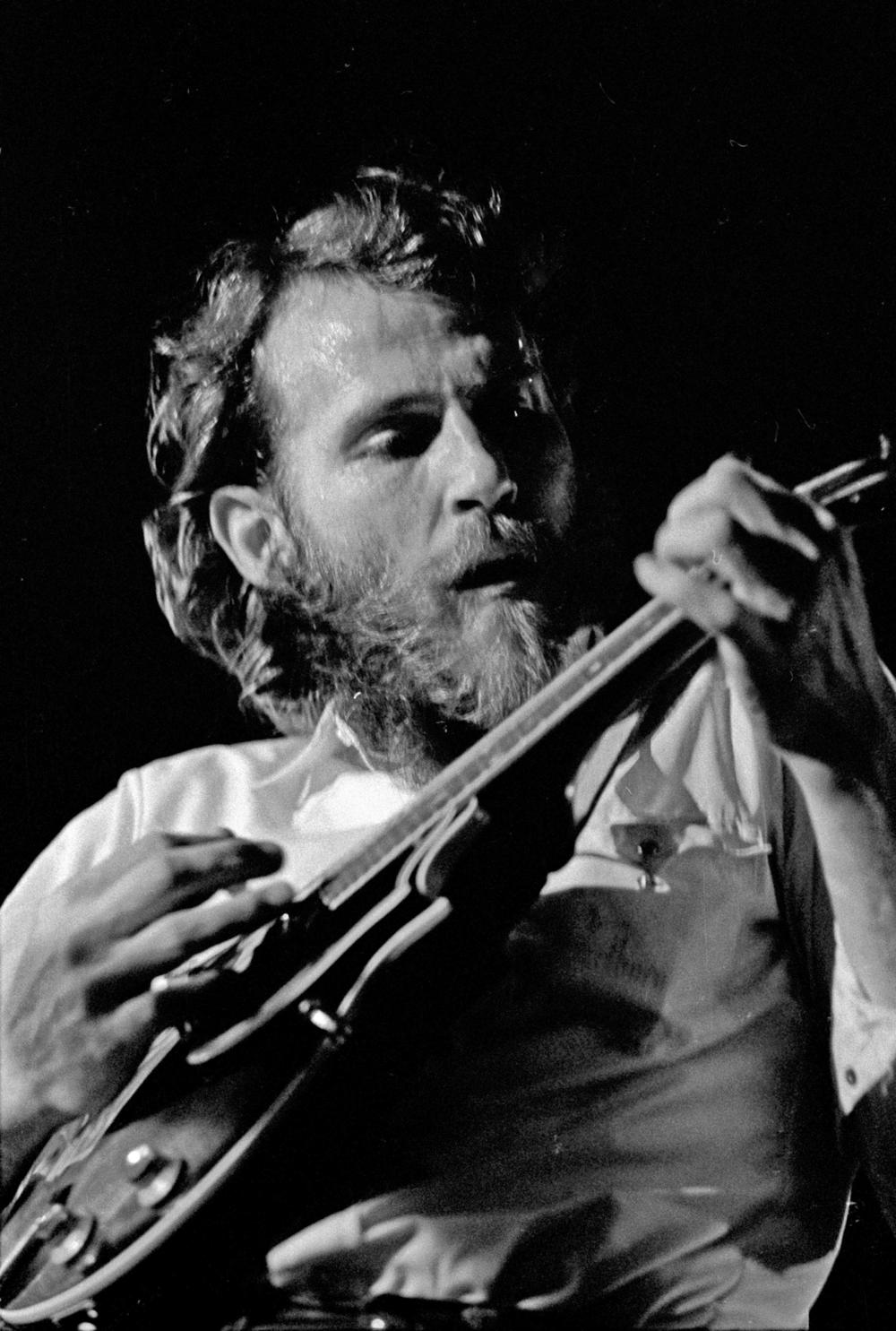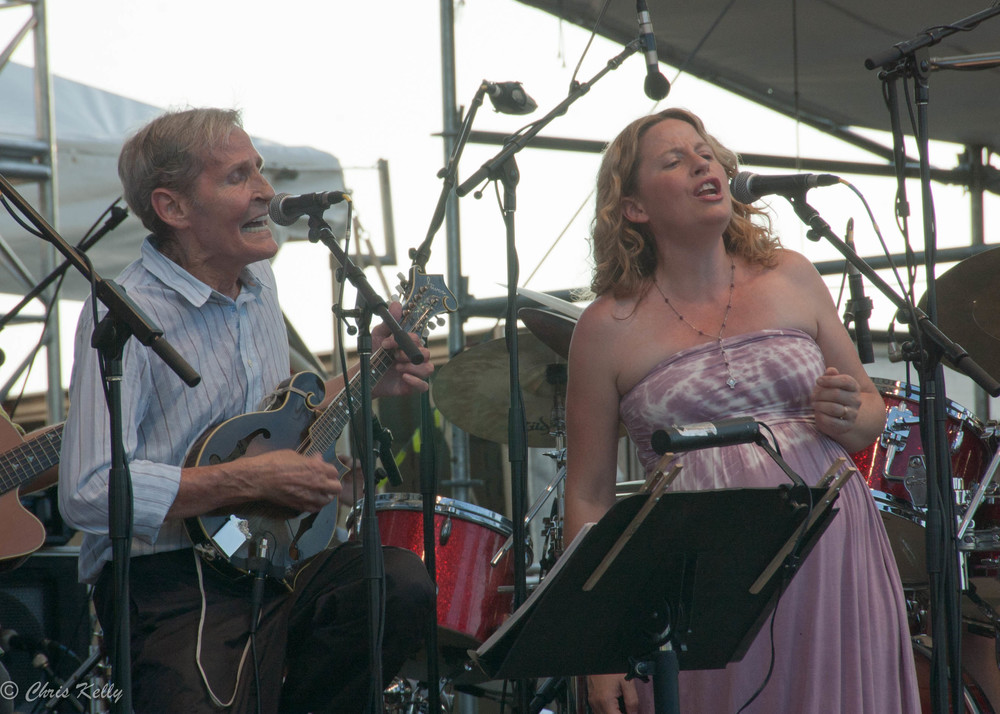Mark Lavon (Levon) Helm was best known as the drummer and singer for the Canadian rock group The Band. Following the demise of The Band, he continued to have a successful career leading his own band, as well as acting in numerous motion pictures.
Helm knew that he wanted to become a musician at age six, after seeing bluegrass musician Bill Monroe perform.
Levon Helm was born on May 26, 1940, outside Elaine, Arkansas to Nell and Diamond Helm. He had two sisters and one brother. He grew up in Marvell, AR working on the family cotton farm but was always encouraged to play and sing music at home and in church. Helm knew that he wanted to become a musician at age six, after seeing bluegrass musician Bill Monroe perform. He began playing guitar at age eight but was inspired shortly afterward to become a drummer after seeing a performance by F. S. Walcott Rabbit's Foot Minstrels, who had a left-handed drummer. He was also inspired by James “Peck” Curtis, the drummer for blues legend Sonny Boy Williamson, who frequently played in the area. Helm began spending time at the KFFA radio studio in Helena (Phillips County) listening to blues performers, and he watched live musical performances in Marvell. When he was twelve, he played guitar on the local music circuit accompanied by his sister Linda on washtub bass, performing at 4-H clubs and other civic-club gatherings. While in high school, he formed his first band, the Jungle Bush Beaters.
When he was seventeen, Helm got his first big break when he met Ronnie Hawkins, the rockabilly star born in Huntsville, AR at the West Helena Delta Supper Club, where Hawkins was working sans drummer. The piano player knew Helm and suggested to Hawkins that the young drummer sit in with the band. Helm was asked to join the band, and once he graduated from high school in Marvell, he joined Hawkins’s band, the Hawks, on the road.
Levon went with Hawkins to Toronto, Canada, where the rockabilly sound was popular. In 1959, Hawkins signed to Roulette Records, and the Hawks recorded two hit albums in 1959, Forty Days and Mary Lou. Along with Helm, Hawkins gradually put together a stellar version of the Hawks that, by 1961, included future Band members—pianist Richard Manuel, bassist Rick Danko, guitarist Robbie Robertson, and keyboard and saxophone player Garth Hudson, all Canadians.

Wishing to expand their musical horizons, the band eventually broke away from Hawkins and began performing as Levon and the Hawks, playing rhythm and blues, blues, and rock and roll. Helm was given top billing, not only because of his seniority in the band but also because he was a member of the musicians’ union, while the others were not. In 1964, they released their first single, “Leave Me Alone,” on which they were listed as the Canadian Squires. They released two more singles that year as Levon and the Hawks: “The Stones I Throw” and “Go Go Liza Jane.”
Their reputation grew to the point that Bob Dylan asked them to be his backup band after he decided to amplify and incorporate more rock into his traditional folk music sound. The band accompanied Dylan on his 1966 tour of the United Kingdom, where they encountered some hostility to his new “electrified” sound. The hostility bothered Helm, so he went back home to Arkansas.
After Dylan's near-fatal motorcycle wreck in July 1966, Dylan and the backup band moved to a pink split-level house, affectionately named Big Pink, in Woodstock, New York, in 1967. There they rehearsed and recorded music that would be released in 1975 as The Basement Tapes. Helm reunited with the group later that year to perform on some of the songs on The Basement Tapes.
In the spring of 1968, The Band—the name they and Dylan used to refer to the combo—recorded the music that would become Music from Big Pink, a widely acclaimed debut album. Released on Capitol Records in 1968, the album combined country and western, Appalachian, R&B, gospel, Cajun, and old-fashioned rock sounds—a synthesis of American music that greatly contrasted with the psychedelic rock more common to the period. In The Rolling Stone Album Guide, Paul Evans wrote that the album was “the group’s tour de force debut: Robertson’s ‘The Weight’ and the Dylan/Manuel ‘I Shall Be Released’ encapsulated the Band’s strengths—the lean grace of Robertson’s guitar, the understated drive of Levon Helm’s drumming, and especially the solo and ensemble brilliance of the group’s three singers.” Helm is credited on the album with mandolin and guitar in addition to vocals and drums.
Music from Big Pink peaked at No. 30 on the Billboard album charts, but the album had a huge impact on such rock luminaries as Eric Clapton, George Harrison, Pete Townshend, and Mick Jagger.
Their reputation grew to the point that Bob Dylan asked them to be his backup band after he decided to amplify and incorporate more rock into his traditional folk music sound.

On Thanksgiving 1976, the Band performed their farewell concert, titled “The Last Waltz.”
In 1969, The Band released its eponymous album, The Band, which included songs such as “The Night They Drove Old Dixie Down,” “Up on Cripple Creek,” “Across the Great Divide,” “Look Out Cleveland,” and “King Harvest (Has Surely Come).” In The Rolling Stone Album Guide, Evans called it “one of the richest and deepest records in rock history.”
The album The Band broke into the Billboard Top 10 on the album charts in late 1969, and the single “Up on Cripple Creek” broke into the Top 30 in late 1969. Meanwhile, in England, The Band’s fame grew as “The Weight” from their debut album reached No. 21 on the British charts. “Rag Mama Rag,” a single from the second album, was a Top 20 hit in the U.K. in April 1970.
Meanwhile, Helm was living with Libby Titus in Woodstock, and on December 3, 1970, their daughter, Amy, was born.
The Band’s popularity continued to grow, and they continued to tour and record albums, including Stage Fright (1970), Cahoots (1971), a live double album called Rock of Ages (1972), and Moondog Matinee (1973). In 1974, they reunited with Dylan to record the studio album Planet Waves. They also toured with him, releasing a live album, Before the Flood, which featured both Dylan and The Band songs. In 1975, the double album The Basement Tapes, recorded with Bob Dylan in 1967, was finally released on Columbia Records. Subsequently, The Band released the albums Northern Lights/Southern Crosses (1975) and Islands (1977).
In 1976, Robbie Robertson announced that he was tired of the road and wanted the band to go out with one last hurrah. On Thanksgiving 1976, The Band performed their farewell concert, titled “The Last Waltz.” The concert, featuring such friends of The Band as Eric Clapton, Dr. John, Muddy Waters, Neil Young, Van Morrison, Ronnie Hawkins, and Joni Mitchell, was recorded for a triple album released in 1978. A documentary film of the event, directed by Martin Scorsese, was also produced and released that year as The Last Waltz.
Following the break-up of The Band, Helm signed to ABC records and released Levon Helm and the RCO All-Stars in 1977. The album featured Steve Cropper, Duck Dunn, Booker T. Jones, Dr. John, Paul Butterfield, and Fred Carter Jr. Helm followed up with the album Levon Helm in 1978. In 1980, Helm released the critically acclaimed album American Son on MCA. In 1982, he released an album called Levon Helm on Capitol Records.
Meanwhile, Helm had embarked on an acting career. He played Loretta Lynn’s father, Ted Webb, in Coal Miner’s Daughter in 1980, as well as Captain Jack Ridley in The Right Stuff (1983). He also appeared in End of the Line (1988), which was filmed primarily in Little Rock (Pulaski County), Staying Together (1989), and The Adventures of Sebastian Cole (1998). In 2005, he was in the Tommy Lee Jones–directed Three Burials of Melquiades Estrada. He also played the ghost of Confederate general John Bell Hood in the film In the Electric Mist starring Tommy Lee Jones and John Goodman.
In 1981, Levon married Sandra Dodd.
The Band, without Robbie Robertson, who chose not to join the re-formed Band, got together in 1983 and toured regularly. Richard Manuel committed suicide in 1986, but The Band carried on, recording three albums in the 1990s: Jericho (1993), High on the Hog (1996), and Jubilation (1998).

In 1993, Helm, with rock writer Stephen Davis, published a book about The Band’s rise to fame, This Wheel’s on Fire. In 1994, Helm was inducted along with the other members of The Band into the Rock and Roll Hall of Fame.
In the late 1990s, Helm survived throat cancer, which forced him to quit singing. Nonetheless, he formed a band, Levon Helm and the Barn Burners, with a group of Woodstock-area musicians. He also released his greatest-hits album, titled The Tie That Binds: The Best of Levon Helm, 1975–1996. At his home studio in Woodstock, he recorded an album titled Souvenir in 1997 with a Woodstock band called Crowmatix. He regularly performed with the Barn Burners, often with his daughter Amy on vocals.
In 2005, Levon began singing again, and in 2007, he released a new album, Dirt Farmer, on Vanguard, which garnered a Grammy in the Traditional Folk Album category. A second solo album, Electric Dirt, was released June 30, 2009, and went on to win a Grammy Award for Best Americana album.
In Woodstock, he performed monthly Midnight Ramble shows at his home. He also toured seasonally with the Levon Helm Band and occasional guest performers.
Helm died on April 19, 2012, from throat cancer. In April 2013, a documentary about Helm titled Ain’t in It for My Health was released in Manhattan. Set in Helm’s New York home and directed by Jacob Hatley, it features him discussing his music career and his home state.
